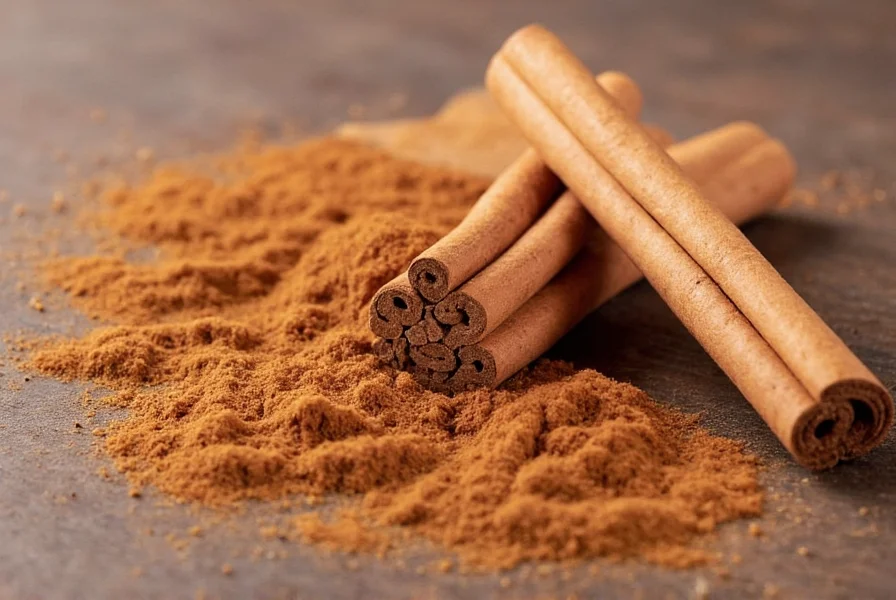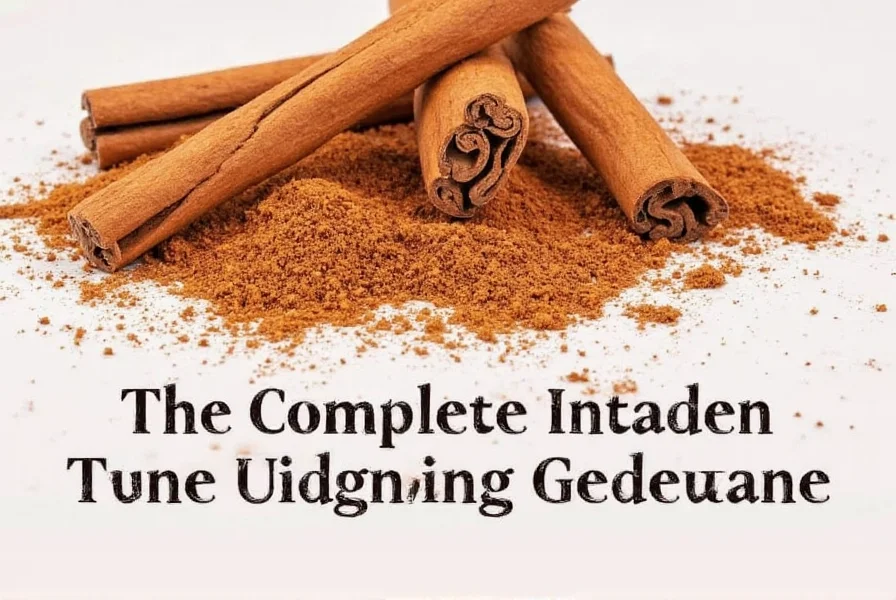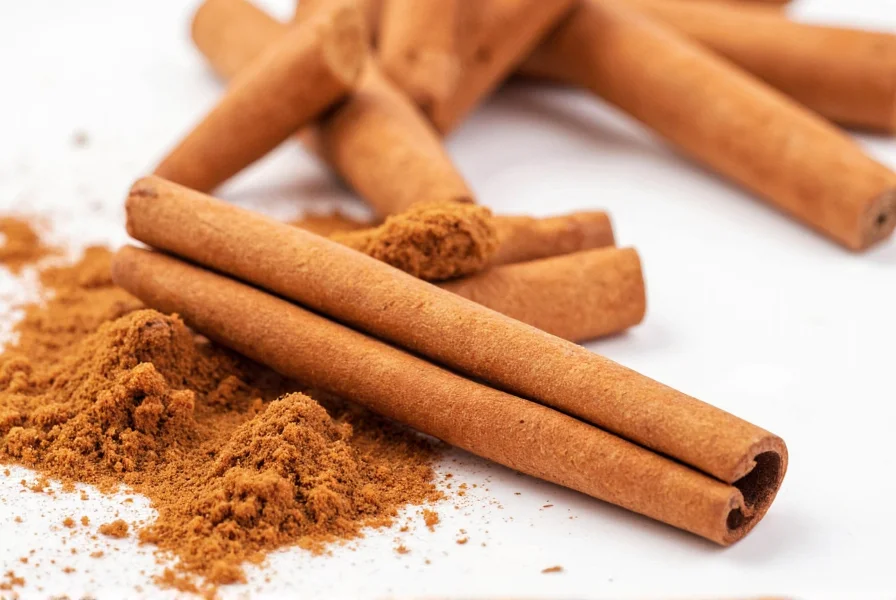Cinnamon's unique sensory experience has made it one of the world's most beloved spices for thousands of years. Understanding what gives cinnamon its distinctive taste helps home cooks and professional chefs alike maximize its potential in culinary applications.
The Science Behind Cinnamon's Flavor
Cinnamon's flavor chemistry is dominated by cinnamaldehyde (60-90%), which provides the signature sweet-spicy warmth. Eugenol (5-10%) contributes clove-like notes, while smaller compounds like linalool and cinnamyl acetate add floral and fruity undertones. These compounds work together to create cinnamon's complex flavor profile that's simultaneously sweet, woody, and mildly pungent without being overly hot.
When you taste cinnamon, your perception evolves: an initial sweet impression gives way to warm spiciness, followed by subtle citrus and floral notes in the finish. This layered flavor development makes cinnamon particularly versatile in both sweet and savory applications.
Ceylon vs. Cassia: Understanding Flavor Differences
Not all cinnamon tastes the same. The two primary varieties—Ceylon ("true" cinnamon) and Cassia—have distinct flavor profiles:
| Characteristic | Ceylon Cinnamon | Cassia Cinnamon |
|---|---|---|
| Flavor intensity | Milder, more delicate | Bolder, more intense |
| Sweetness level | Higher natural sweetness | Less sweet, more pungent |
| Spice level | Gentle warmth | Stronger heat |
| Additional notes | Citrus, floral undertones | Woody, earthy notes |
| Best culinary uses | Desserts, beverages, delicate dishes | Robust dishes, baking, spice blends |
Ceylon cinnamon (Cinnamomum verum), often called "true cinnamon," has a more complex, nuanced flavor with subtle citrus notes and less heat. Cassia cinnamon (Cinnamomum cassia), which makes up most cinnamon sold in the United States, delivers a stronger, more intense flavor with pronounced warmth and less complexity.

How Cooking Methods Affect Cinnamon's Taste
Cinnamon's flavor transforms significantly when exposed to heat. When added early in cooking, its volatile compounds mellow, creating a more integrated warmth. Adding cinnamon toward the end of cooking preserves more of its bright, citrusy top notes.
In baking, cinnamon undergoes the Maillard reaction with sugars, developing richer caramel notes. This is why cinnamon rolls have that distinctive deep, complex flavor that raw cinnamon powder doesn't provide. For optimal flavor extraction in beverages like chai or mulled wine, simmering cinnamon for 10-15 minutes allows full flavor release without becoming bitter.
Perfect Flavor Pairings for Cinnamon
Cinnamon's versatile flavor profile complements numerous ingredients:
- Fruits: Apples, pears, bananas, and stone fruits enhance cinnamon's natural sweetness
- Spices: Pairs beautifully with nutmeg, allspice, and cardamom in spice blends
- Dairy: Creates classic combinations with milk, cream, and yogurt
- Chocolate: Complements both dark and milk chocolate exceptionally well
- Savory elements: Works surprisingly well with lamb, sweet potatoes, and tomatoes
Understanding what does cinnamon taste like helps determine optimal pairings. Its sweet-spicy nature balances acidic ingredients while enhancing natural sugars in fruits and vegetables.
Practical Applications in Cooking and Baking
When working with cinnamon, consider these practical tips for maximizing its flavor:
- For baking, use 1/4 to 1/2 teaspoon per cup of flour as a starting point
- Toast whole cinnamon sticks briefly in a dry pan before grinding for intensified flavor
- Add ground cinnamon to dry ingredients first to prevent clumping
- In savory dishes, pair with a pinch of acid (lemon juice or vinegar) to brighten flavors
- Store cinnamon in an airtight container away from light and heat to preserve flavor compounds

Storing Cinnamon to Preserve Flavor
Cinnamon's volatile flavor compounds degrade over time. Ground cinnamon retains optimal flavor for 6-12 months, while whole cinnamon sticks maintain quality for 2-3 years. For longest shelf life, store in an airtight container in a cool, dark place. Avoid storing above the stove or near other heat sources, as temperature fluctuations accelerate flavor degradation.
Properly stored cinnamon should have a strong, sweet aroma when opened. If the scent has faded significantly, the flavor compounds have likely degraded, and it's time to replace your supply.
Understanding cinnamon flavor profile for better cooking results
Knowing why does cinnamon taste sweet despite not containing sugar helps explain its versatility. The cinnamaldehyde compound triggers sweet receptors on your tongue while simultaneously activating warmth receptors, creating that signature sweet-spicy sensation without actual sugar content.
This dual sensory experience makes cinnamon particularly valuable in reduced-sugar recipes, where it can enhance perceived sweetness without additional calories. Understanding these nuances of cinnamon taste characteristics allows for more intentional use in both traditional and innovative culinary applications.
What makes cinnamon taste sweet if it doesn't contain sugar?
Cinnamon contains cinnamaldehyde, which activates both sweet and warmth receptors on your tongue. This creates a perception of sweetness without actual sugar content, making it valuable for enhancing flavor in reduced-sugar recipes.
Why does my cinnamon taste bitter sometimes?
Bitterness typically occurs when cinnamon is exposed to excessive heat for too long. To prevent this, add ground cinnamon during the last 5-10 minutes of cooking. Bitterness can also indicate old or degraded cinnamon that has lost its volatile flavor compounds.
Which cinnamon variety is better for baking?
Cassia cinnamon is generally preferred for baking due to its stronger, more robust flavor that holds up well in sweet applications. However, Ceylon cinnamon works better in delicate desserts where a more nuanced flavor is desired. Many professional bakers use a 50/50 blend for balanced complexity.
How can I tell if my cinnamon has gone bad?
Fresh cinnamon should have a strong, sweet aroma. If it has little to no scent when opened, the volatile flavor compounds have degraded. Visually, it should be a vibrant reddish-brown color—dull or faded color indicates age. Properly stored ground cinnamon lasts 6-12 months, while sticks maintain quality for 2-3 years.











 浙公网安备
33010002000092号
浙公网安备
33010002000092号 浙B2-20120091-4
浙B2-20120091-4